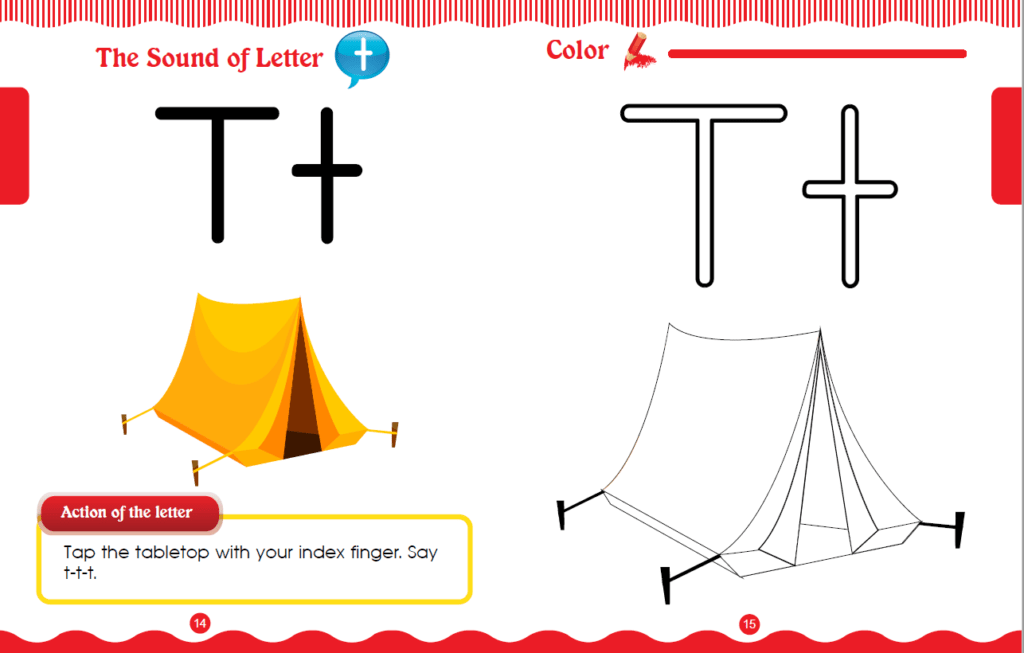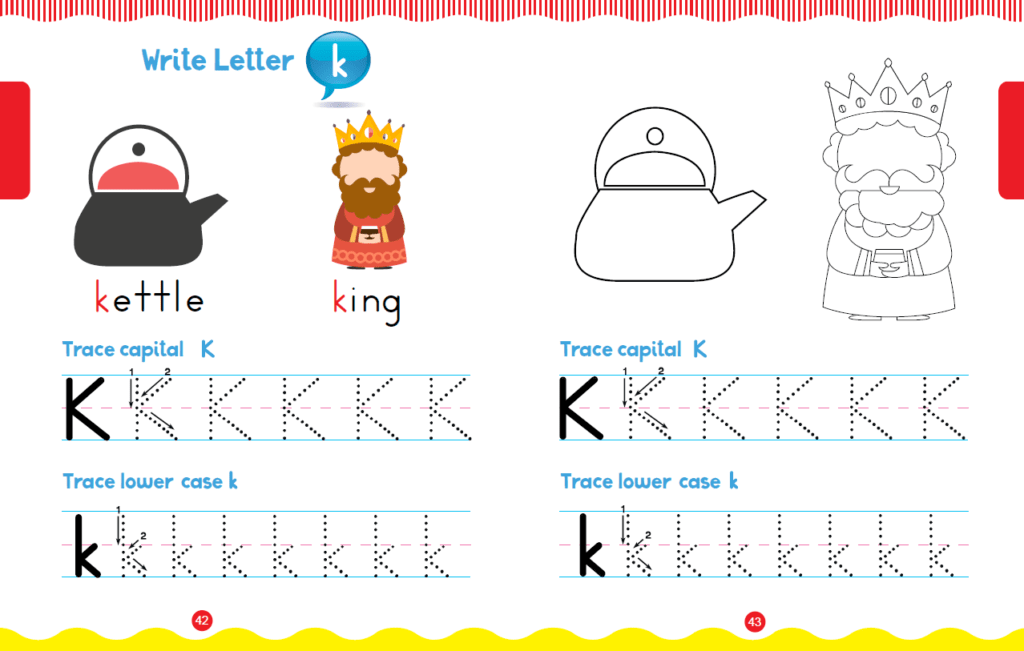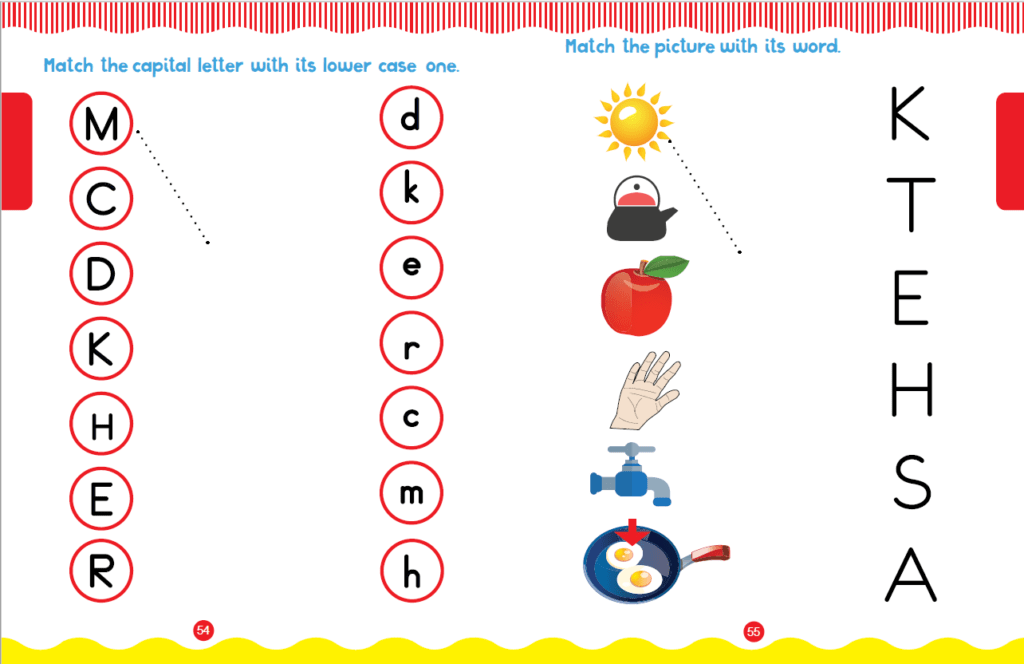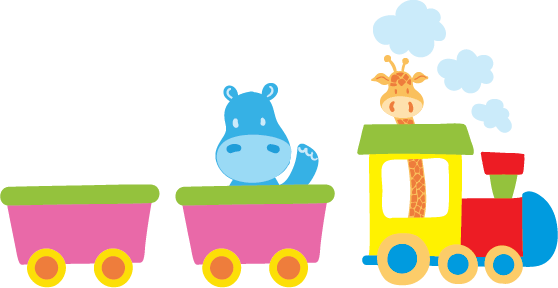There’s little debate that English is a complex and challenging language to learn. With more exceptions than rules, even native speakers get tongue-tied (or pen-tied) at times. To make learning English accessible for young children, the All Aboard the English Train series uses a phonics-based approach of teaching sounds first (rather than letter names or formation).
Consider this spread from one of the Level 1 (Piggyback Ride) books in the series:

Though the pages look simple, they provide much content for teaching young learners.
- The most important element is the sound of the letter (t says t). This is important to distinguish from the name of the letter (tee), which is not introduced at this point.
- As with all new sounds, this one is accompanied by an action. It provides a gross motor cue for children in english language book, engaging both their mouth and their body.
- The action of the letter also introduces extra t vocabulary workbook words (tap and tabletop).
- The visual cue of a tent illustrates how sounds blend together to make words. Children build their phonemic awareness by listening for the t in tent.
- By recognizing the illustration and learning the word tent (without reading it), children add to their English vocabulary.
- The capital and lower case letter show how the t sound is represented in writing.
- Coloring the capital and lower case letters builds fine motor skills and prepares children for writing.
Phew! At first glance, did you realize all of the important pre-reading and language skills these two simple pages held in children reading books? Notice also that all of this learning is possible without knowing that the name of the letter is “tee.”
All aboard the English Train continues its phonics approach by building upon this knowledge and adding new skills. The Level 2 (Passenger Ride) books introduce letter formation while continuing to attach sounds to vocabulary words:

The Level 2 (Passenger Ride) books also present tasks in which children rely on visual knowledge of letters (shown on the left) and connect visual knowledge to sound/vocabulary knowledge english for children(shown on the right).

As children master letter sounds and connect them with their written form, they are able to begin blending the sounds of written letters in order to read simple words:

By Level 3 (Pullman Ride), children have learned all the sounds and letter formations they need to read and write a variety of English words. Their minds are also ready to complete more complex language tasks:

This approach might seem surprising to those who learned the traditional alphabet-based approach to learning letters by name, but it has been proven very successful. Letter sounds are vastly more useful than letter names, and children who learning english as a second language, them can begin blending words (in reading, writing, and speaking) very quickly. The
All aboard the English Train series follows this phonetic approach, combined with colorful graphics and engaging exercises, in order to make language learning fun and easy for children. In a future post, we’ll address the reasons for not introducing letters in alphabetical order.
If you have thoughts about your own experience teaching or learning English, please use the comment box below to share with our community.

